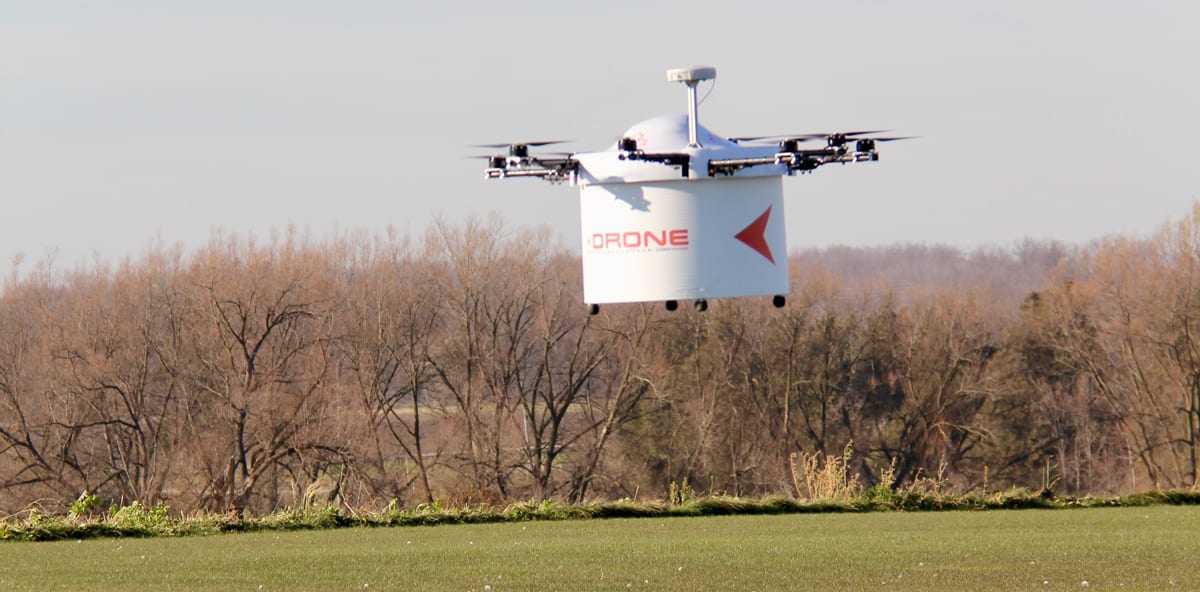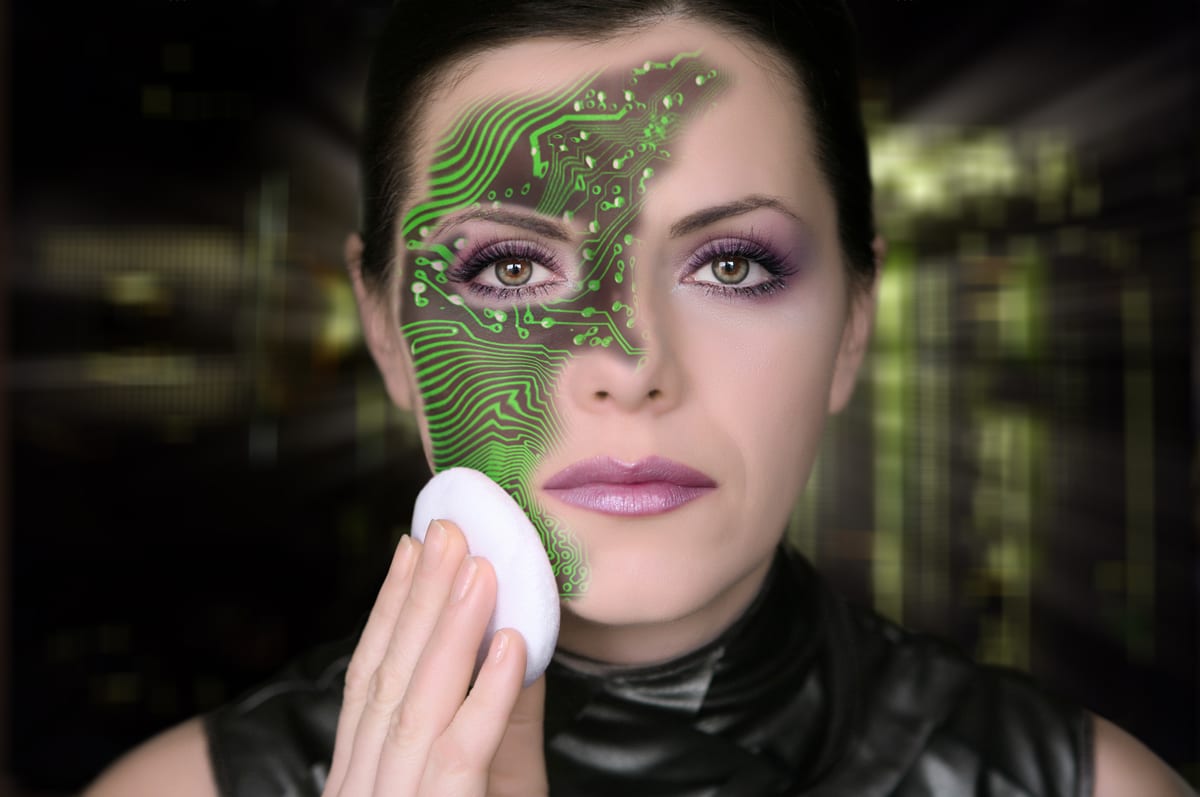Artificial Intelligence
Investing in the Robots Who Will Take Your Job
No matter who you are, your life is about to be irrevocably changed by artificial intelligence.
Millions of jobs are going to vanish over the next 10 years, and unless new types of jobs are created, the unemployment rate in the industrialized world will skyrocket.
The very fabric of our society will be torn apart and put back together in ways we can’t even imagine.
The latest study released on Artificial Intelligence, by the Cornerstone Capital Group, concludes that 40 per cent of all retail jobs in America could be erased in 10 years.
Approximately 6 million to 7.5 million people are expected to lose their jobs, replaced by intelligent machines and systems.
Most of those losing their jobs will be women, who tend to dominate the jobs in the retail sector. For example, 73 per cent of cashiers in America are women, so this automation process in retail will disproportionately affect female workers.
And it isn’t just retail.
As Artificial Intelligence improves at an exponential rate, more and more jobs now completed by humans can be done at lower cost by robots and computers.
AI has been developing relatively quietly in the background, but it is now developed enough to take over many of the jobs we take for granted.
And research organizations around the world are taking notice.
HOW ROBOTS WILL TRANSFORM THE HUMAN ECONOMY
A report by the highly regarded research firm Forrester concluded this year that six per cent of all jobs in the US will be taken by robots within just five years!
And that’s just the beginning. “By 2021, a disruptive tidal wave will begin,” says Forrester report co-author Brian Hopkins. “Solutions powered by AI/cognitive technology will displace jobs, with the biggest impact felt in transportation, logistics, customer service, and consumer services.”
For example, Amazon and Drone Delivery Canada have both developed autonomous drones that can pick up parcels and drop them off to the customer automatically, with no human intervention.

The only thing preventing these technologies from literally taking off is that government has not yet developed regulations to govern autonomous drones.
But as regulation catches up to technology, Boston Consulting Group predicts 25 per cent of jobs could be replaced in industrialized countries, while a study by Oxford University suggests more than one-third of existing jobs in the UK are at risk of automation over the next 20 years.
Unless those jobs are replaced with some other type of work … that means even the world’s richest countries will face unemployment rates of 25 to 35 per cent!
THE FIRST JOBS TO DISAPPEAR
Numerous studies have looked at which jobs are the most vulnerable. We already mentioned the devastating impact on retail workers, but other jobs are equally at risk.
DRIVERS: From taxi drivers to truck drivers, there are millions of people who make their living by driving people and parcels from one place to another. The advent of driverless cars is coming faster than people think. In the UK, automated taxi pods will start running in Milton Keynes, offering rides around the town.
FACTORY WORKERS: Robots already work in thousands of factories around the world, but they currently operate alongside human operators. That is expected to change.
In China, Shenzhen Everwin Precision Technology aims to reduce its current workforce of 1,800 people in Dongguan by 90 per cent when it opens the first ‘Robots Only’ factory later this year.
And it’s only the first of many. Since September of 2016 a total of 505 factories in the city have replaced 30,000 workers with robots.
LEGAL WORKERS: You’d think lawyers and paralegals would be safe from automation, but Deloitte estimates about 40 per cent of jobs in the legal sector will be automated over the coming decade.
Artificially intelligent computers can comb through millions of pages of documents very quickly, and pick out those documents that are relevant to a discovery hearing or even a trial. Jobs once completed by lower level lawyers or paralegals would be replaced at a fraction of the cost.
ACCOUNTANTS: Ironically, the same report by an accounting firm predicts that accountants stand a 95 per cent chance of losing their jobs to automation. Computers are better at crunching numbers than humans … and in fact …. a software program did my personal taxes this year!
This is just a partial list of at risk jobs as AI continues to develop. Others expected to be impacted include pilots, bank workers, financial analysts, insurance agents, construction workers, surgeons, anesthesiologists, farm workers and even journalists!
Three years ago Associated Press started using AI software to write quarterly earnings reports. In the past three years the software has improved to the point that computers now write sports stories and reports on the financial markets.
And then there’s the job of waging war.
‘WAR BOTS’ DEVELOPED TO REPLACE HUMAN SOLDIERS
It sounds like a scene from a Sci Fi movie … but it really happened on a stretch of California beach in April.
Killer robots, bristling with advanced weapons, stormed a beach in southern California alongside human soldiers, while unmanned drones dropped bombs on the enemy from above.
The ‘attack’ was part of a military exercise by the US Marine Corps called ANTX 2017. It was designed to explore ways that unmanned weapon systems could help reduce casualties when the Marines launch an amphibious assault.

MOBILE, Ala. (Nov. 6, 2014) The Office of Naval Research-sponsored Shipboard Autonomous Firefighting Robot (SAFFiR) undergoes testing aboard the Naval Research Laboratory’s ex-USS Shadwell in Mobile, Ala. SAFFiR is a bipedal humanoid robot being developed to assist Sailors with damage control and inspection operations aboard naval vessels. (U.S. Navy photo by John F. Williams/Released)
But the exercise also marks a new high water mark in the development of artificial intelligence.
The War Bots on the battlefield included a fully autonomous hovercraft that can land equipment on the beach, and then sit offshore and provide precision fire support from its GPS guided rocket launcher.
On the beach the Marines were assisted by MUTTS (Multi-Utility Tactical Transports) armed with 50 calibre Browning machine guns.
When the Marines got bogged down under enemy fire, small drones would zip overhead and drop small anti-personnel bombs on the enemy position.
In one sense ANTX was just another military exercise to test out new equipment.
But it also marks a significant step toward robots taking over what is now the sole preserve of human soldiers.
CAN ROBOTS AND HUMANS CO-EXIST AT WORK?
There’s no question companies and shareholders can earn greater profits by embracing AI and automation.
But is it good for the economy in general? Is it good for humanity in general?
That’s an open question.
The answer will be based on whether new jobs will be created in this economy, to replace the jobs taken by robots.
Some experts in automation say this is exactly what will happen. When robotic machines began working in factories, humans simply took on more complex jobs, and employment rates stayed about the same.
But others say the complexity of work being taken over by AI means humans may not have other work to do.
Leigh Watson Healy, chief analyst at the market research firm Outsell, says things will change because robots are getting smarter and no longer need human supervision.
“What’s different now?” he asks. “The pace of technology advancements plus the big data phenomenon lead to a whole new level of machines to perform higher level cognitive tasks.”
It may be that humans will find new and more complex jobs to do once robots take over the more mundane work … or it may be that all humans do less work in general.
AI and robots may actually take on larger work loads, and the economy will shift so humans doing less work will be paid more money per hour.
Or, there’s the worst-case scenario: AI takes over half the jobs, and leaves half the population out of work and in permanent poverty.
THE BIG WINNERS WILL BE AI INVESTORS
At the other end of that wealth spectrum will be those who either develop AI, implement AI in their companies, or invest in the right AI companies.
But there’s a problem investing in Artificial Intelligence; you have to be very, very intelligent.
Put another way, it’s difficult to invest in a product or company you don’t understand, and artificial intelligence is so complex it’s difficult for non-experts to pick the right robotic horse.
However, there are a few ways the lay investor can get in on the coming AI boom.
If you want traditional investing strategy, go for the big guns in the field.
IBM, Microsoft, Intel, NVIDIA, Apple and Alphabet (parent of Google) are all publicly traded blue chip companies making heavy investments in AI.
IBM has underperformed on the market in recent years, but its Watson offering is groundbreaking. It gives any company the ability to tap into Watson’s artificial intelligence and use it to create innovative programs of their own.
Microsoft’s Azure is another AI cloud platform gaining wide acceptance from Fortune 500 companies.
Intel has developed its own AI chip and bought AI chip maker Altera in 2015, and it also purchased Mobileye, a producer of driverless car technologies, for $15.3 billion.
NVIDIA is a riskier bet, as it only just began paying dividends in 2012, but the company is pushing hard into supercomputer technologies like its Pascal architecture chips, built expressly for AI.
Apple has long been a market leader in AI, and is best known for Siri, its somewhat intelligent digital assistant, or identifying people in the Photos app. Apple has established AI centres in Seattle and Japan, and is widely rumoured to be working on driverless car systems.
And Alphabet, of course, owns Google and developed the AlphaGo supercomputer that has trounced all of the world’s greatest Go players.
If, on the other hand, you’re looking for investments in startups or young AI companies, that’s much harder.
If you’re not a software expert, engineer, or AI aficionado, your best bet is to look for those people who are, which is primarily venture funds specializing in the field.
VENTURE FUNDS FORMING FOR AI INVESTMENTS
One sign the field is getting very hot right now is the rise of venture funds that specialize only in Artificial Intelligence.
Smith and Williamson announced this week (late May) it is launching an equity fund specifically making investments in the fields of AI and Machine Learning.
Analytic Ventures is another company formed specifically to fund AI companies, and has already invested in a half-dozen promising startups.
Some other funds focusing at least partly on AI include SV Angel in San Francisco, Comet Labs, AME Cloud Ventures (run by Yahoo co-founder Jerry Yang) and Accel Partners, famous for their investments in Facebook and Dropbox.
It isn’t always possible to invest in these funds … but you typically can see what they’re investing in by visiting the Portfolio page of their websites, and then following up with that company’s Investor Relations people.
Knowing when a hot VC-backed AI company is getting ready to go public is a great way to get tremendous upside by investing early … and if possible, before the IPO. I did exactly that on several occasions; for example doubling my investment in one week with Lululemon, or getting an 800 per cent bump in two months with a medical marijuana startup.
GET INVOLVED WITH AN INCUBATOR FOR EARLY INTEL ON AI STARTUPS
And finally, another great way to find out about early stage companies with promise is to check in with tech incubators like Element AI.
This Montreal-based incubator focuses only on AI and machine learning companies, and has already attracted a major investment from Microsoft Ventures.
Element AI is co-hosting an AI forum this week, but more importantly is becoming one of the world’s hubs for Artificial Intelligence development.
High tech incubators typically welcome investors with open arms, and getting personally involved in such an organization is a great way to learn about startups with potential.
However you do it, if you’re serious about making money by investing in tech, then learning about investing in AI will be critical.
As investor Mark Cuban of Shark Tank fame put it in a recent interview, “Artificial Intelligence, Machine Intelligence, Deep Learning … if you don’t understand it … learn it. Otherwise you’re going to be a dinosaur in three years.”
By Gary Symons, Equedia













Hey, I require your input regarding this. Please email me straight away: frans.wikman@gmx.com
We will be replaced or join as cyborgs.